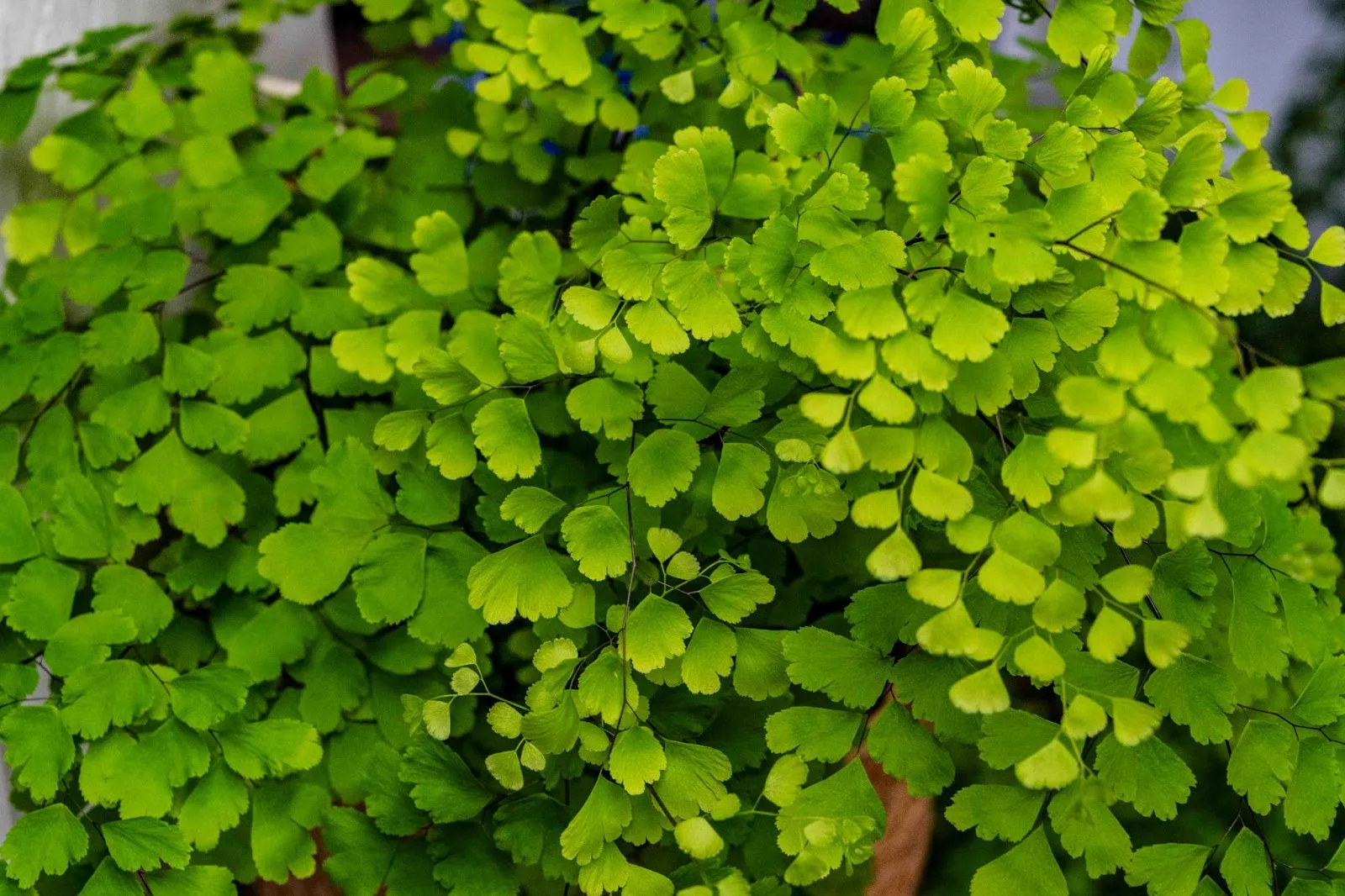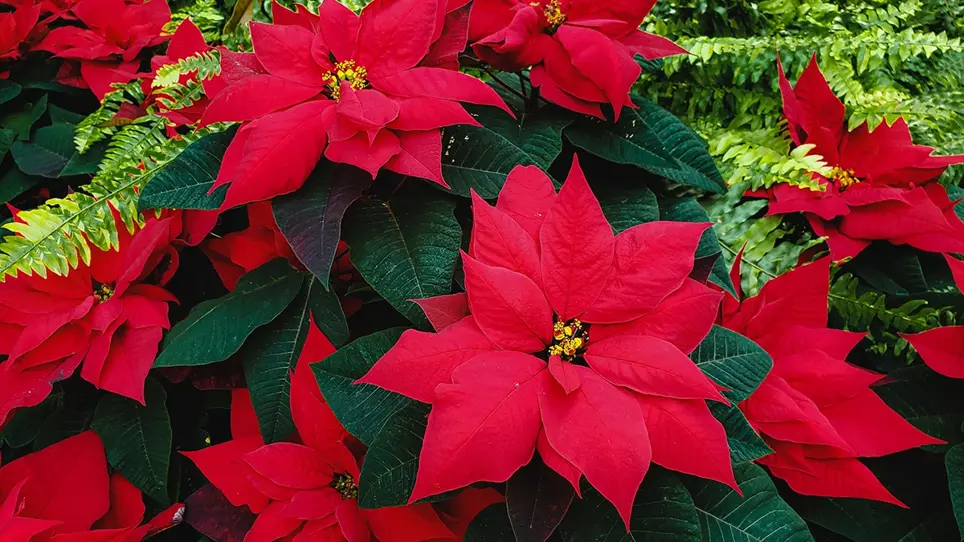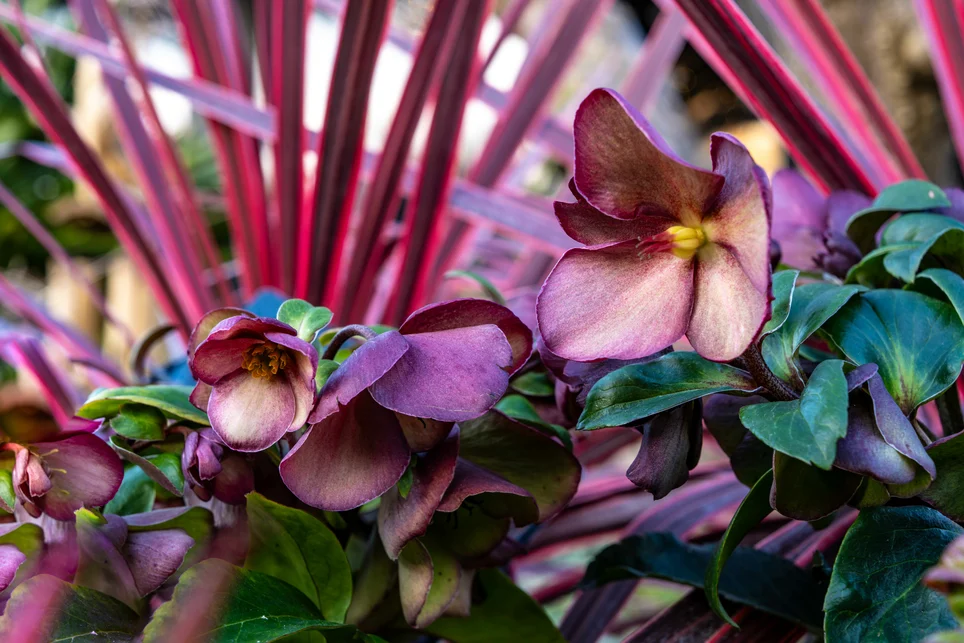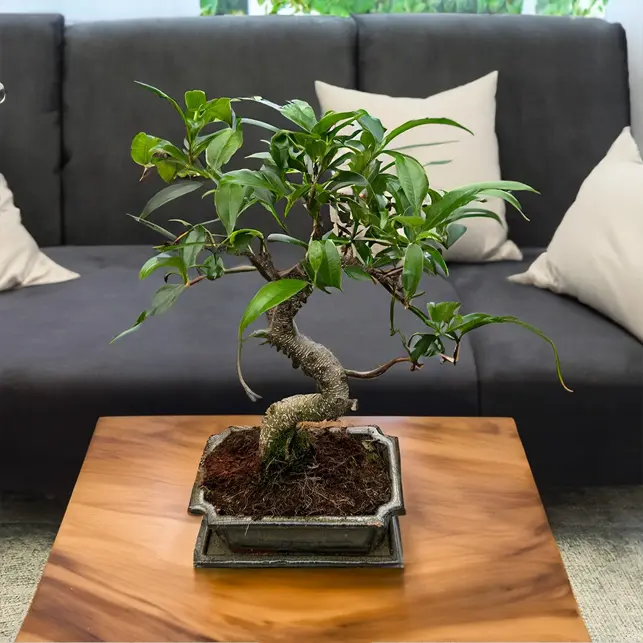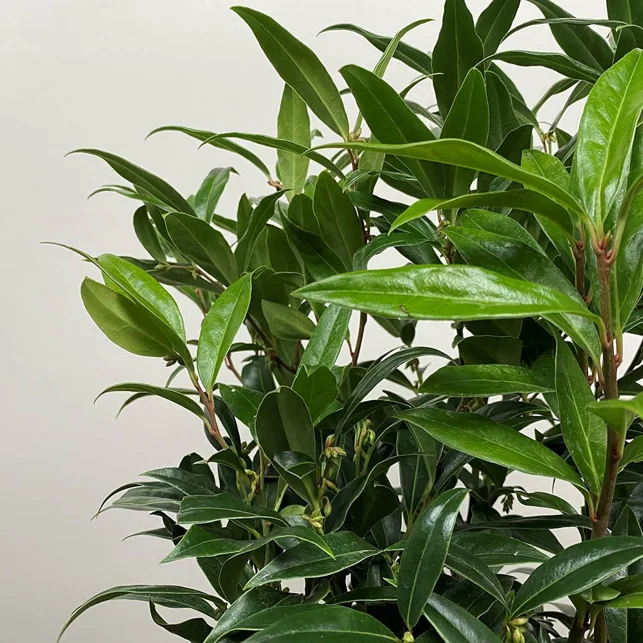
If you've been scrolling through Instagram lately and noticed ferns – yes, those distinctive vascular plants – starting to appear in the coolest interiors, you're witnessing the beginning of something interesting. These prehistoric plants, with their beautiful foliage and fronds that are the envy of many ferns, once dominated Victorian drawing rooms, and are now quietly becoming the insider's choice before the mainstream catches on.
While everyone else is still queuing for overpriced monstera at the big chains, the plant-savvy are discovering what our great-grandparents knew all along: ferns are some of the most stunning indoor plant species you can keep – and they bring a lush, green, low maintenance grace to any flat.
The shift is just starting to happen in North London's most design-conscious homes. Tucked into bathroom corners of renovated Georgian flats, cascading from macramé hangers in Stoke Newington studios, or holding court on vintage plant stands picked up from Broadway Market. The people who really understand plants are choosing ferns, and once you understand why these perennial, shade-loving beauties are so well-suited, you'll wonder why it took us so long to rediscover them.
SHOP FERNS
Why North London Flats Were Made for Ferns
Here's the thing about ferns that nobody tells you: these are nature’s adaptable survivors, and they actually prefer the conditions most of us are stuck with. That north-facing Victorian conversion with the original sash windows that barely let in light? Perfect for most ferns. The bathroom with no window but humidity levels that would make a rainforest – or rice paddies in Southeast Asia – jealous? Even better. While everyone else is desperately trying to find enough sun for their fiddle leaf figs, fern owners are laughing.
Ferns evolved on shaded forest floors where direct sunlight was about as common as a parking space in Crouch End on a Saturday. They’re programmed to thrive in shadier areas, which makes them brilliant for London living. We're not talking about surviving – we're talking about properly flourishing in spots where many other plants would simply give up.
Pteris ensiformis ‘Evergemiensis’- Silver Lace Fern at Boma Garden Centre
The Prehistoric Survivors in Our Stock
We've got four main fern families at Boma right now, each representing different genera and bringing something unique to your garden, home, or container display. Let's start with the showstoppers.
- Asplenium (Bird's Nest Ferns) are the architectural showstoppers among evergreen indoor plants. With their glossy, undivided fronds emerging from a central rosette, they look distinctly prehistoric. The 'Crispy Wave' variety is renowned for its less graceful shuttlecock-form, ruffled edges catching the light, while 'Osaka' and 'Antiquum' are more classic – each adding stature and elegance to even the smallest indoor garden. Available from tiny 6cm starters all the way up to statement 37cm stock for instant impact on your plant stand.
- Nephrolepis (Boston and Sword Ferns) are familiar to many – think your nan’s living room or an old-world conservatory. The classic Boston fern, with its gracefully arching fronds, is a beautiful foliage plant adored for purifying air and creating dense, green cascades in hanging baskets or pots. Varieties like 'Green Lady' and 'Tiger Fern' add drama and texture for every corner of your home. Boston ferns stand out as hardy ferns that thrive even for beginners – just keep their soil consistently moist and they're low maintenance stars.
- Adiantum (Maidenhair Ferns) are the queens of delicate green. Known for being a little less forgiving, these ferns differ from others with their dainty leaves and require consistently moist soil – think terrariums, bathrooms, or shaded window ledges where humidity is high and conditions mimic their natural, tropical environments. 'Fritz Luthi' showcases jet-black stems contrasting with ethereal leaflets, while 'Fragrans' even produces a light scent when brushed past. True plant lovers swear by these for an indoor plant challenge that rewards with jaw-dropping foliage.
- Pteris (Brake or Ribbon Ferns) aren’t as famous but shine for hardy, reliable performance. Varieties like 'Albolineata' and 'Evergemiensis' display painted silver stripes and textured, crinkled fronds, forming lower growing, less graceful shuttlecock shapes ideal for beginners or those with limited light. These perennials are practically unkillable and make perfect additions for both garden beds and shaded indoor containers.
Nephrolepis exaltata 'Bostonienis' - Boston Fern at Boma Garden Centre
The Science Bit (It's actually quite interesting)
Ferns are characterized by their reliance on and ability to produce spores (housed in sporangia) for reproduction. Unlike most other plants that produce seeds or flowers, ferns reproduce using spores which develop on the undersides of mature fronds, grouped in clusters called sori. When conditions are right, these spores germinate into a tiny gametophyte, producing gametes, which, after fertilization, become the next generation's sporophyte (the leafy plant you know and love). It’s a fascinating life cycle that's nearly unchanged for millions of years.
That’s not all – a few species of ferns like Boston ferns have been shown in NASA’s clean air study to excel at removing harmful substances like formaldehyde and xylene from indoor air. So those big, green fronds are not only stunning – they’re practical air purifiers, too!
Real Talk About Fern Care
Let's be honest about what works in actual London flats, not some idealised greenhouse scenario.
- Water: Ferns prefer soil kept consistently moist – not soggy, but never dry. Imagine a wrung-out sponge as the goal. During hot summers or in top-floor flats, water may be needed twice a week; in cooler months, weekly is usually enough. Most ferns suffer if left to dry out, but too much water (especially for species like the lady fern and royal fern) can cause yellowing fronds and root rot, so always check for good drainage.
- Humidity: Higher levels are key, especially for tropical ferns and those with more delicate foliage. Bathrooms and kitchens make ideal locations, but grouping ferns together or placing them on trays of pebbles with water helps create a microclimate. Avoid constant misting in hard water areas.
- Light: Most ferns thrive in shade to bright, indirect light. North-facing windows, shadier areas of your flat, or spots three feet from a window are all perfect. Direct sun should be avoided.
- Temperature: Typical room temperature is fine for most ferns, but avoid draughts and keep them away from radiators or AC vents.
Troubleshooting Without the Drama
- Brown tips: Usually indicate low humidity or fluoride in the water. Letting tap water stand overnight helps.
- Yellowing fronds: Often from overwatering – check if the plant is sitting in water.
- Leaf drop: Often just natural turnover. Remove old fronds to keep your fern looking its best.
Adiantum raddianum - Maidenhair Fern available at Boma Garden Centre
Why Ferns, Why Now?
Ferns found around the world, from tall tree ferns in New Zealand and Southeast Asia to the royal fern and lady fern of UK gardens, have survived countless eras. Their adaptability and evergreen nature make them perfect companions for modern life. They don’t need as much as other plants – less sun, less fuss, more reward – and thrive in the very places other houseplants halt.
Whether you're a beginner after a hardy fern like the Boston, lady fern, or Pteris, or a connoisseur wanting to experiment with edible fern shoots or create a lush, forest-like ground cover outdoors (think bracken, royal fern, and tree ferns), Boma has the stock to suit every taste and space.
From tiny ferns for your desk to large garden species for planting under trees or in moist garden crevices, there's something here for every group of plant lovers. These versatile perennials bring green vibrancy to containers, gardens, and naturally to shadier parts of your home.
The Bottom Line
Ferns aren’t just enjoying a moment – they’re experiencing a true Victorian renaissance. They add stature to awkward corners and offer evergreen calm in our high-paced world. With their beautiful foliage and prehistoric elegance, they are the ultimate low maintenance, pet-safe indoor plants for London city life. Sometimes, the Victorians got it right the first time.
Want advice specific to your space or which fern species will thrive in your garden? Visit us at Boma for honest recommendations, expert tips, and London’s widest selection of ferns in stock this season.
Come in and have a proper look at our fern selection. We'll help you pick the right variety for your space, set you up with everything you need, and give you the real advice that actually works in North London flats – not the fantasy greenhouse version. Because at the end of the day, the best plant is the one that's still alive six months later, quietly getting on with making your home feel more like an actual sanctuary and less like another rental.
Sometimes the Victorians got it right the first time.
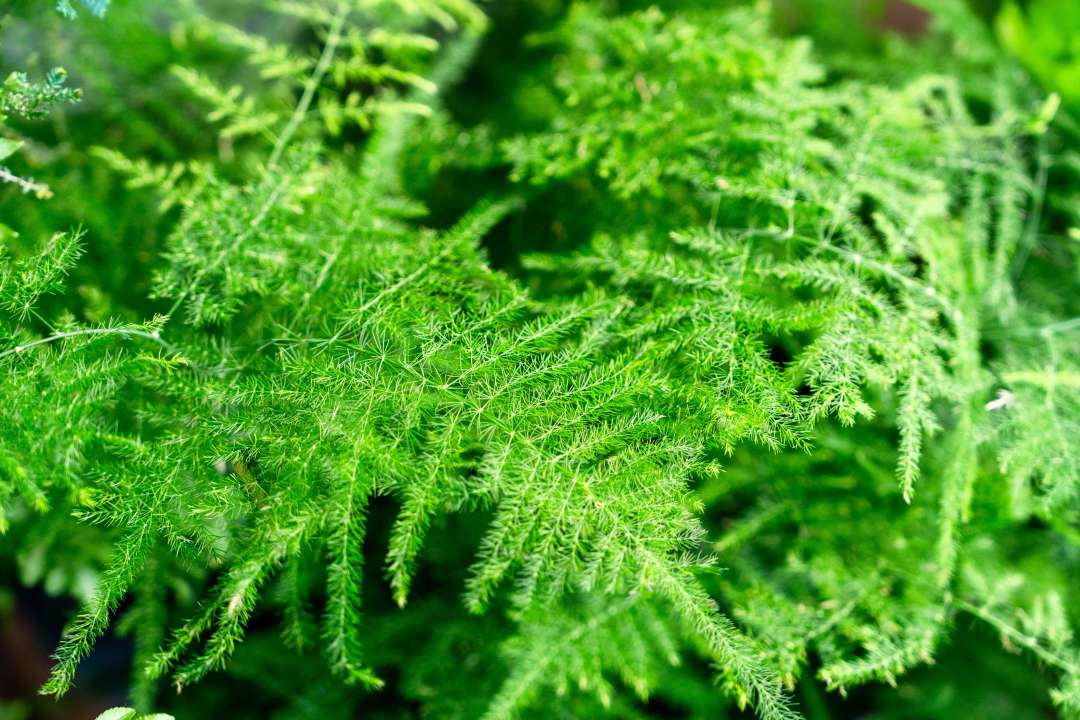 Asparagus Asparagus setaceus -Asparagus Fern, Lace Fern at Boma Garden Centre
Asparagus Asparagus setaceus -Asparagus Fern, Lace Fern at Boma Garden Centre
Visit Us | Contact Us | Shop Ferns
Your Fern Questions, Answered
Which fern is genuinely unkillable for absolute beginners?
Start with a Pteris or a mature Boston fern for bold, forgiving results. Many hardy ferns bounce back from neglect much better than delicate species like maidenhair or royal fern.
Can ferns cope with zero natural light?
No ferns – or other plants – truly thrive without some light. For completely windowless rooms, look at grow lights or realistic artificial options.
Why do ferns cost more than other houseplants?
Ferns differ from fast-growing annuals or bulbs. Most ferns, including tree ferns, have a slow life cycle and can take years to reach selling size. This, plus their intricate propagation process from fertilized egg to full-grown sporophyte, adds value.
Are ferns pet-safe?
Yes, true ferns (including Boston, lady fern, royal fern, and most common genera) are safe for cats and dogs.
Will they survive two weeks while I'm on holiday?
Absolutely. Stand your ferns in the bath on wet towels with water, or ensure soil remains moist and humidity high – they are low maintenance survivors.






